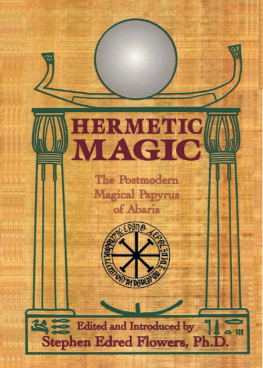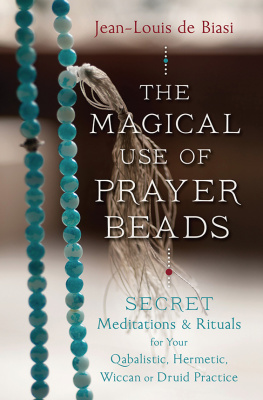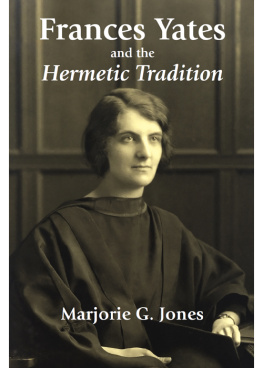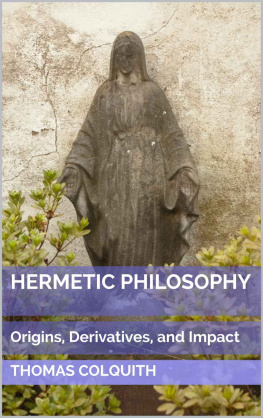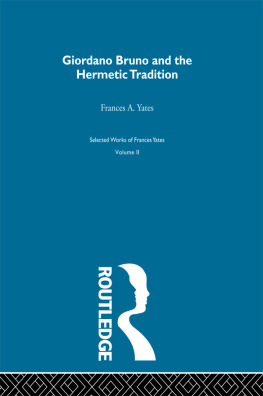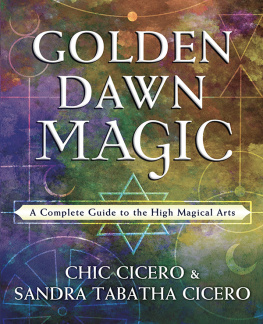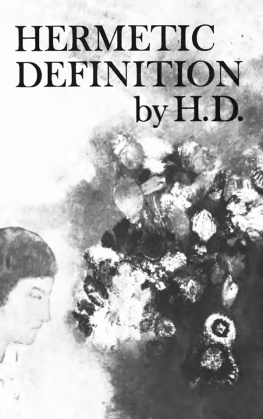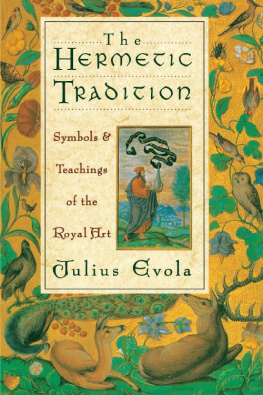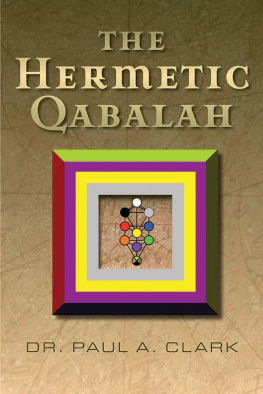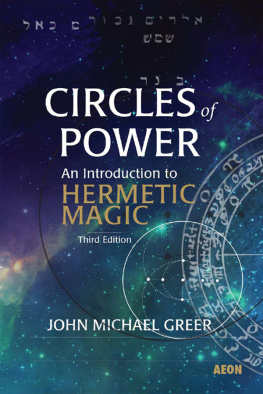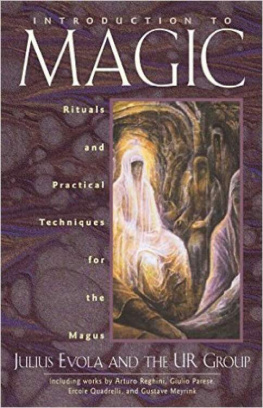
First published in 1995 by
Red Wheel/Weiser, LLC
York Beach, ME
With offices at
368 Congress Street
Boston, MA 02210
www.redwheelweiser.com
Copyright 1995 by Stephen Edred Flowers, Ph.D.
All rights reserved. No part of this publication may be reproduced or transmitted in any form or by any means, electronic or mechanical, including photocopying, recording, or by any information storage and retrieval system, without permission in writing from Red Wheel/Weiser. Reviewers may quote brief passages. Material quoted in this book may not be reproduced without permission of the copyright owner.
Library of Congress Cataloging-in-Publication Data
Flowers, Stephen E.
Hermetic Magic : the postmodern magical papyrus of Abaris / Stephen Edred Flowers,
p. cm.
1. Hermetism. 2. Magic. 3. Rites and ceremonies.
1. Title.
BF1611.F57 1995
135'4.4dc20
ISBN 0-87728-828-3
95-38494
CIP
08 07 06 05 04 03
14 13 12 11 10 9 8 7 6
TS
Typeset in 11 point Garamond
Printed in the United States of America
07 06 05 04 03
10 9 8 7 6 5 4 3
The paper used in this publication meets the minimum requirements of the American National Standard for Information SciencesPermanence of Paper for Printed Library Materials Z39.48-1984.
www.redwheelweiser.com
www.redwheelweiser.com/newsletter
This work is dedicated to my Teachers, my Students, and most especially to P--, whose Word guided my hand, and to whose Works show us further horizons.
It is also dedicated, in the deepest sense, to K who is my Wisdom and my Power.
Table of Contents
Figures
Tables
Preface
Quod superius est sicut quod inferius et quod inferius est sicut quod superius ad perpetranda miracula rei uniusThat which is above is like that which is below and that which is below is like that which is above, to achieve the wonders of the One Thing. These words ring out from the wisdom of Herms Trismegistosthe Thrice-Greatest, as recorded in the Tabula Smaragdina, or Emerald Tablet. As it was, so it might also be, applied to the Hermetic laws as far as the working of true Hermetic magical formulas is concerned. The Hermetic tradition of magic is one of the most often invoked of the so-called Western schools of magic. Its technical formulas have been well documented for nearly a hundred years. But even now they remain only barely known to the community of modern magiciansor theurgistswho would make use of them. The formulas have been buried out in the openin academic books, many written in non-English languages. This book is intended to open the gate to the actual use of the real Hermetic formulas concealed in the magical papyri of Egypt.
These formulas are at least part of the basis of what later came to be known as the Hermetic tradition. The most famous example of this is the Hermetic Order of the Golden Dawn in the late 1800s. The Victorian understanding of the formulas was, however, rather limited and sometimes misinformed. No doubt the magic contained in the papyri has great potency. It represents the first known attempt to bring together many traditions of magic in the world and to forge them into a unified eclectic system. The papyri themselves, the great repository of these formulas, required extensive research by experts over a period of several decades before they were truly ready to reveal their many secrets. Now is that time. These are their secrets.
I originally had the idea for this book when doing academic research for the Runic school of magic. I became aware of the fact that there were well over a hundred documents of original magical literature dating from the first four centuries C.E. which contained the roots of what was widely practiced out of occult books of our day. These documents were written in the Greek, Coptic, and Egyptian languages.
Further research, both scholarly and practical, revealed that the magic of the papyri was much more down to earth and pragmatic than the often complex forms of Renaissance and Victorian occultism derived from the practices outlined in the papyri. This pragmatic base became clear once a certain set of codes was cracked open.
This book also might have been titled The Practical Greek Kabbalah. But this title would not be entirely accurate. It would, however, express the great debt we owe to the Hebrew tradition for having preserved intact a system of mystical speculation and cosmology. Without the Hebrew Kabbalah the reconstruction of the Hellenistic Cosmograph would have been impossible. However, the tradition expressed in this text is something other than the Hebrew Kabbalah. It is a pagan parallel and analog to that tradition.
The original papyri contain many formulas which call for animal sacrifice or the use of substances that must be obtained from dead animals. None of the workings presented in this book do so. But we must remember the time and place of the papyria largely agricultural world of some 1500 to 2000 years ago. When one of the old spells called for the blood of a black ass, it was really no more a rare ingredient than, let's say, the crank case oil of a black Chevy pickup truck would be today. I would advise anyone who is going to use this book seriously to look into the originals behind the forms given here. (They can be found in English translation in The Greek Magical Papyri in Translation, edited by Professor Hans Dieter Betz, published by the University of Chicago Press in 1986.) In choosing the models for the workings given in the practical part of this book, I always chose ones that did not even originally require the use of practices or substances now repugnant to us. This, by the way, was not difficult since a great number of the workings rely almost totally on verbal and other symbolic acts.
In many ways this book is different from other modern manuals of magical practice. More details are given on how it is different in the introduction. If you find yourself mystified by the contents of the book, refer back to this preface for clarification.
This is a book of experimental and experiential philosophy and paleologythe study of ancient things. It is not enough to read about such things. We can learn something of the true essence of a teaching by experiencing its actions as much as by hearing or reading its words. Purely academic exploration is rarely transformative. The voyager must actually do, work, experience and thereby gain real results and real understanding. It is by such voyaging that the magician reaches the opposite shore of the river.
But as the Hermetic dictum is applied to a temporal modelas it was, so shall it beby experiencing the sights, sounds, thoughts, actions, and all the dozens of other things that come with the performance of magical acts, we can not only become one with the ancients, but more importantly we can become one with the very models or paradigms they themselves were using.
It is my hope that the readerthe experimenter and explorerwill undertake this voyage of discovery along the path of the ancient Hermeticists. To know, to will, to dare, and to conceal what you learn in the depths of your hearts. For, in the end, no matter how much you try to say concerning what you will experience, the truth will only be audible in silence.
Stephen Edred Flowers, Ph.D.
Mo Mo
Austin, Texas
Abbreviations
C.E.: Common Era (= A.D.: Anno Domini).
B.C.E.: Before the Common Era (= B.C.: Before Christ).
Copt.: Coptic.
Egypt.: Egyptian.
Next page
